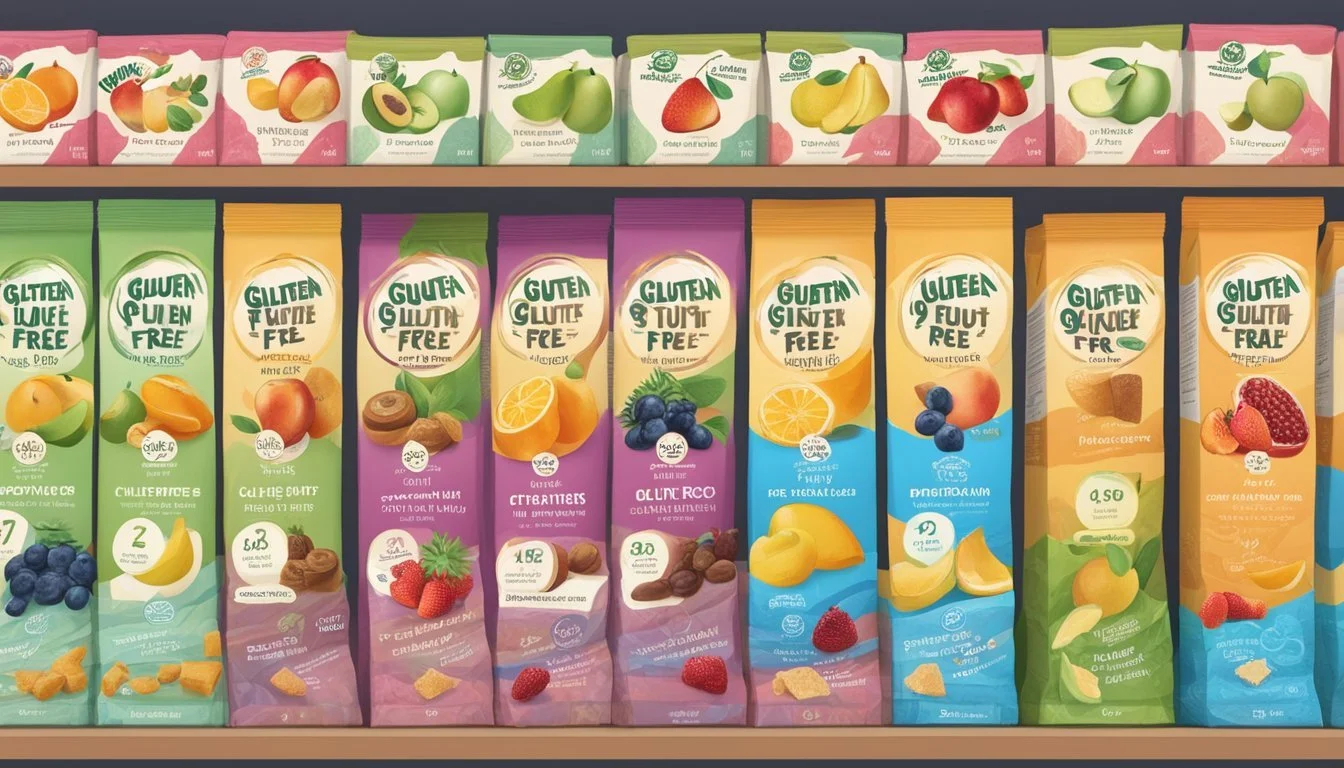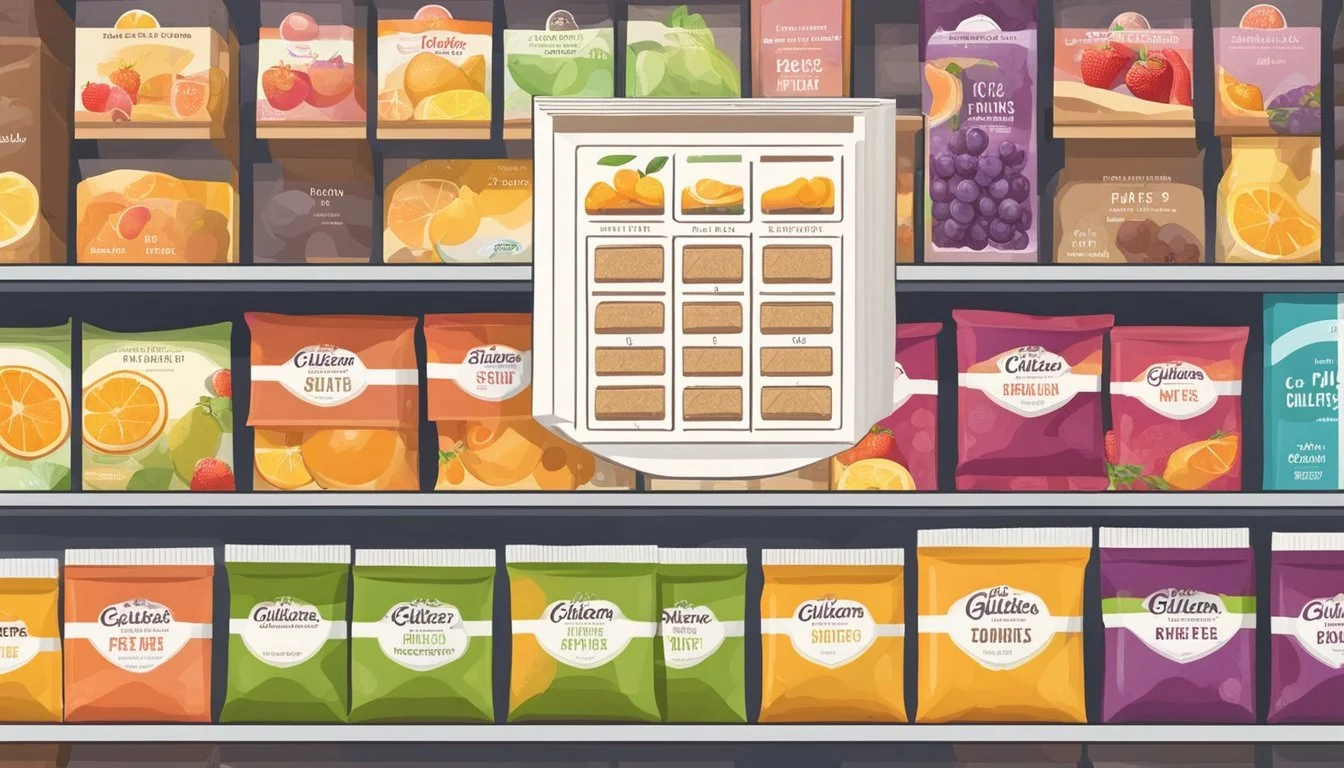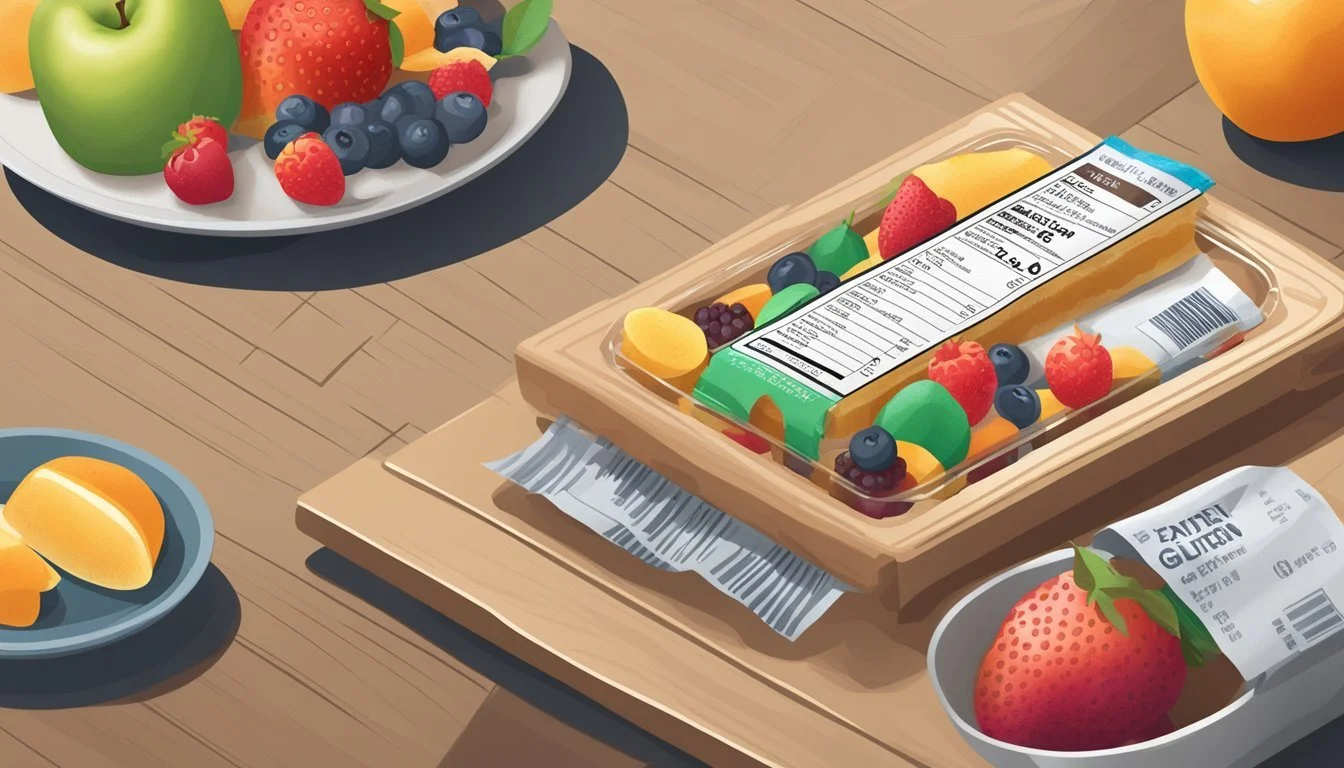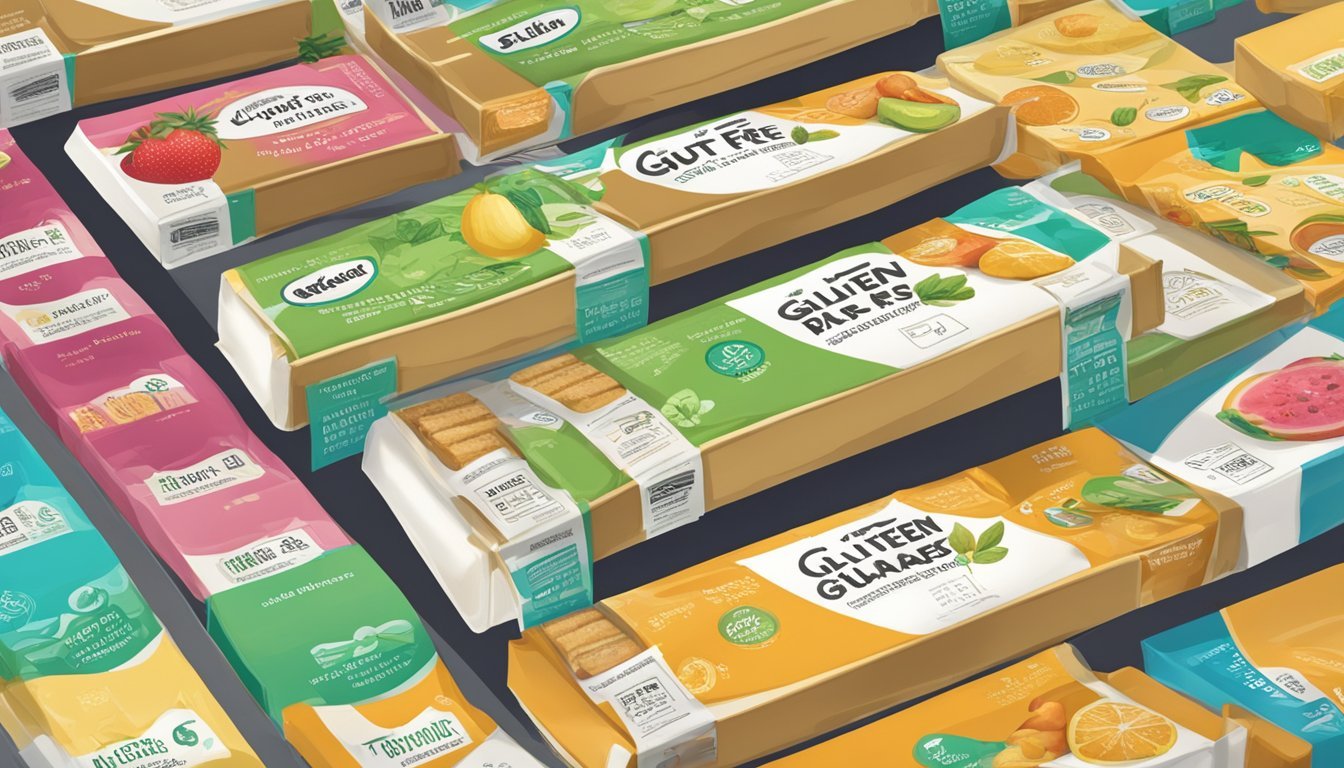How Long Do Gluten-Free Fruit Bars Last?
Shelf Life and Storage Tips
When it comes to the shelf life of gluten-free fruit bars, understanding their longevity is crucial for both consumers and manufacturers. Typically, these bars can remain fresh and safe to eat for up to 6-12 months if properly stored. Their shelf stability is largely influenced by factors such as the ingredients used and the packaging methods.
Gluten-free fruit bars like those from Outshine often boast a longer shelf life because they are made without preservatives and artificial colors. Stored in a cool, dry place and kept in their original, unopened packaging, these bars can maintain their quality for up to a year. However, once opened, it's recommended to consume them within a few days to ensure the best taste and texture.
This extended shelf life is not only convenient but also essential for individuals who rely on these products for dietary reasons. Brands such as Nature's Bakery, known for their gluten-free options, also emphasize their products' longevity without compromising on flavor. Proper storage and mindful purchasing can help consumers enjoy these nutritious snacks, knowing they won't spoil quickly.
Understanding Gluten-Free Foods
Gluten-free foods cater to individuals who have gluten intolerance or celiac disease. These foods often include specific ingredients and offer several benefits that improve overall health.
Definition of Gluten-Free
Gluten-free foods do not contain gluten, a protein found in wheat, barley, and rye. Gluten can cause severe reactions in individuals with celiac disease or gluten sensitivity.
To be labeled gluten-free, a product must contain less than 20 parts per million (ppm) of gluten, as regulated by the FDA. Common ingredients in gluten-free products include rice, corn, and potato starch. These substitutes prevent the reactions caused by gluten and allow those with intolerances to consume a variety of foods safely.
Benefits of a Gluten-Free Diet
A gluten-free diet offers several health benefits for those with gluten intolerance or celiac disease. Firstly, it can lead to improved digestion, reducing symptoms such as bloating, gas, and diarrhea.
Additionally, maintaining a gluten-free diet helps in the healing of the small intestine in celiac patients, allowing for better nutrient absorption. This can result in increased energy levels and overall well-being. Including nutritious, naturally gluten-free foods like fruits, vegetables, and lean proteins can contribute to a balanced, healthy diet.
The Shelf Life of Gluten-Free Fruit Bars
Gluten-free fruit bars offer a delicious and convenient snack option, but their shelf life can vary based on several factors like ingredients and storage conditions. It's crucial to know how long they remain fresh and safe to eat.
Factors Affecting Freshness
The shelf life of gluten-free fruit bars is influenced by a mix of ingredients, preservatives, and storage methods. Fresh fruit in the bars can shorten their longevity due to moisture content.
Bars with natural preservatives like honey may last longer. Storage in a cool, dry place away from direct sunlight also contributes to prolonged freshness. Improper storage, such as exposure to heat and humidity, can cause quicker spoilage.
Average Shelf Life
Generally, gluten-free fruit bars have a shelf life ranging from 6 to 12 months from the production date. Some brands may specify this on their packaging.
Factors like the type of fruit used and whether the bars contain preservatives can extend or reduce this period. Once opened, they typically last for about 3 months if stored properly in an airtight container.
Recognizing Spoilage
It's essential to recognize spoilage to avoid consuming expired fruit bars. Signs include changes in texture, such as becoming excessively hard or soggy, and visible mold.
Unpleasant odors and any off-taste are also clear indicators. If any gluten-free fruit bar exhibits these signs, it's best to discard them immediately to ensure safety.
Proper awareness of these spoilage signs helps maintain a safe and enjoyable snacking experience.
Proper Storage Techniques
Ensuring gluten-free fruit bars stay fresh involves several key storage techniques. This section explores optimal storage conditions in the pantry, the role of refrigeration, and how freezing and thawing affect longevity and quality.
Optimal Conditions for Pantry Storage
Gluten-free fruit bars, when stored in the pantry, should be kept in an airtight container. This minimizes exposure to air, which can cause them to dry out and lose flavor.
Pantry storage is suitable for bars that contain dried fruits and nuts, as they typically have a lower moisture content.
Key tips for pantry storage:
Use sealed containers to prevent exposure to air and moisture.
Keep in a cool, dark place to reduce the risk of spoilage.
Check the "best by" date for guidance on peak quality.
Refrigeration and Its Effects
Refrigeration can extend the shelf life of gluten-free fruit bars, especially those with higher moisture content. Storing bars in the fridge slows down microbial growth and keeps them fresher for longer.
Considerations for refrigeration:
Seal the bars in airtight containers or bags to prevent them from absorbing other odors.
Label and date the containers to track freshness.
Refrigerated bars may firm up; allow them to reach room temperature before consuming for better texture.
Freezing and Thawing Procedures
Freezing gluten-free fruit bars is effective for long-term storage, preserving them without compromising quality. Proper thawing ensures they retain their taste and texture.
Steps for freezing:
Wrap each bar individually in plastic wrap or foil.
Place wrapped bars in a freezer-safe bag or container.
Thawing guidelines:
Move the desired number of bars from the freezer to the fridge the night before you plan to eat them.
For quicker thawing, leave the bars at room temperature for a few hours.
These methods balance convenience and preservation, offering flexible options for keeping gluten-free fruit bars at their best.
Nutritional Information of Gluten-Free Fruit Bars
Gluten-free fruit bars offer a range of beneficial nutrients, making them an excellent choice for various dietary needs. They typically contain essential vitamins, minerals, and macronutrients such as calories, protein, and fiber.
Caloric Content Analysis
Gluten-free fruit bars generally contain between 100 to 200 calories per serving. This caloric range provides a quick energy boost, making these bars ideal for snacks or light meals.
For instance, LÄRABAR fruit bars, as noted, have indulgent flavors with minimal ingredients that contribute to their caloric content. Knowing the calorie count helps with meal planning and dietary management, especially for those counting calories.
Vitamins and Minerals Present
Many gluten-free fruit bars are rich in essential vitamins and minerals. Typically, these bars contain Vitamin C and Potassium.
Vitamin C supports the immune system and skin health, while potassium aids in maintaining proper heart and muscle function. For example, some bars include fruits like apples and bananas, which are natural sources of these nutrients.
Assessing Protein and Fiber
Protein and fiber content in gluten-free fruit bars can vary. On average, these bars provide around 2 to 6 grams of protein per serving, primarily sourced from nuts and seeds.
Additionally, the fiber content usually ranges from 3 to 5 grams per bar. Fiber aids in digestion and helps maintain satiety, making these bars an excellent option for those looking to manage their hunger and digestive health.
Maintaining a balanced intake of these nutrients is essential for overall health.
Selecting Quality Ingredients
Selecting the right ingredients is crucial for making high-quality, gluten-free fruit bars that are delicious and long-lasting. The main components to focus on include the type of gluten-free flour, fresh fruit choices, and healthier alternatives to sugar and fats.
Gluten-Free Flour Options
When baking gluten-free fruit bars, choosing the right type of flour is essential. Almond flour is a popular choice due to its rich flavor and nutrient profile. It provides a moist texture, which is ideal for fruit bars.
Rice flour and oat flour are also excellent options. They offer a neutral taste, allowing the flavors of the fruits to shine through. Additionally, gluten-free all-purpose flour mixes, which may include a blend of rice flour, tapioca starch, and potato starch, provide a well-rounded substitute for traditional wheat flour.
To avoid cross-contamination, ensure the flour is processed in a gluten-free facility. This is particularly important for individuals with celiac disease or severe gluten sensitivities.
Choosing Fresh Fruits
Using fresh fruits is key to enhancing the flavor and nutritional value of gluten-free fruit bars. Fresh strawberries, blueberries, and raspberries are common choices. These berries not only add natural sweetness but also provide antioxidants and vitamins.
Seasonal fruits are often fresher and more flavorful. Local farmers' markets can be excellent sources for high-quality produce. Ensure fruits are ripe but not overripe to maintain the best texture and taste once baked.
Washing and thoroughly drying fruits before use can help prevent excess moisture, which might affect the texture of the bars. If fresh fruits are not available, frozen fruits can be a good alternative, but they should be thawed and drained properly before use.
Alternatives to Sugar and Fat
Natural sweeteners like maple syrup, honey, and coconut sugar can replace refined sugars in gluten-free fruit bars. These alternatives often provide additional nutrients and a more complex flavor profile.
For a healthier fat option, consider using unsalted butter or coconut oil. These fats can improve texture and flavor without adding unnecessary sodium. For a dairy-free option, nut butters or avocado can be used to provide healthy fats and a creamy texture.
Incorporating nuts such as almonds or walnuts can also add healthy fats and a crunchy texture to the bars. When using these ingredients, ensure they are unsweetened and unflavored to maintain the intended taste profile.
Creating Homemade Gluten-Free Fruit Bars
Homemade gluten-free fruit bars are a delicious and healthy option for snacks. Key aspects include baking from scratch, exploring no-bake variations, and utilizing techniques to ensure consistent results.
Baking from Scratch
Creating gluten-free fruit bars from scratch offers control over ingredients. Begin by mixing gluten-free oats, flour, and sugar in a bowl. Add unsalted butter and use a pastry cutter to achieve a crumbly texture. Press the mixture into a prepared baking pan.
For the fruit filling, combine berries with sugar and gluten-free flour. Pour this over the crust and top with remaining dough. Bake at 350°F for around 35-40 minutes until golden brown.
No-Bake Variations
No-bake gluten-free fruit bars simplify the process by eliminating the oven. Start with a base of blended dates and gluten-free oats. Press this mixture into an 8x8 dish. For the fruit layer, use a fruit puree or jam.
Chill the bars in the refrigerator for a couple of hours to set. This method is ideal for preserving the nutrients in fruits and maintaining a chewy texture.
Techniques for Consistent Results
To achieve consistent results with homemade gluten-free fruit bars, use precise measurements. Weigh ingredients like flour and butter with a kitchen scale. Ensure the baking pan is well-prepared with parchment paper for easy removal of bars.
For no-bake versions, chilling time is crucial. Allow enough time in the refrigerator for bars to set properly. Adjust sweetness by tasting the fruit filling before setting it.
Lastly, always test the doneness of baked bars by checking the color and firmness. Golden brown edges indicate readiness.
Potential Health Considerations
When consuming gluten-free fruit bars, it's important to consider potential allergens and balance sugar and fat intake. This ensures the bars fit comfortably within a health-conscious diet.
Allergens and Sensitivities
Many gluten-free fruit bars are designed to cater to dietary restrictions and sensitivities. Common allergens like nuts, dairy, and soy are often excluded from these products. For instance, Outshine Fruit Bars are free from high fructose corn syrup and are mostly plant-based.
Despite these measures, cross-contact in manufacturing facilities can pose risks for those with severe allergies. Facilities that handle multiple ingredients may still have traces of allergens. Labels such as "gluten-free" don't guarantee the absence of other allergens.
Individuals with celiac disease or gluten sensitivities must check for potential cross-contact warnings. Always read the ingredient list and allergen statements to ensure the product meets dietary needs.
Balancing Sugar and Fat Intake
Gluten-free fruit bars can be high in natural sugars due to their fruit content. Some bars, such as the best fiber bars, have no added sugars but still contain enough natural sugars to be sweet.
Caloric content varies, typically ranging between 60 and 110 calories per serving. Fat content is usually low, and many bars are fat-free. It's essential to monitor saturated fat and sodium levels, which can sometimes be hidden in ingredient lists.
Including these bars in a balanced diet involves managing overall sugar and fat consumption. Portion control is key, especially for those looking to maintain a healthy weight or manage blood sugar levels. Always consider these factors when incorporating gluten-free fruit bars into daily meals.
Serving and Pairing Suggestions
Gluten-free fruit bars are versatile and can be enjoyed at any time of day, whether for breakfast, as a snack, or a dessert. The following suggestions highlight ideal beverages, complementary foods, and suitable occasions for serving these delicious fruit bars.
Pairing with Beverages
Tea and Coffee:
Green tea or herbal teas like chamomile and mint provide a refreshing contrast.
Coffee offers a rich and robust pairing, particularly with fruit bars featuring berries or figs.
Fruit Juice and Smoothies:
Orange juice and apple juice enhance the fruity flavors.
Smoothies with ingredients like bananas, almonds, and honey complement the bars' natural sweetness.
Milk and Dairy Alternatives:
Cold milk or almond milk adds a creamy texture that pairs well.
For a lactose-free option, consider soy or oat milk.
Complementing Foods
Yogurt and Fresh Fruit:
Greek yogurt with a drizzle of honey pairs well.
Fresh fruit segments, such as strawberries or blueberries, enhance the fruity experience.
Nuts and Seeds:
A handful of almonds, walnuts, or sunflower seeds can provide a crunchy contrast.
These additions also boost the nutritional value of the meal.
Cheese:
Soft cheeses like ricotta or goat cheese can add a creamy texture.
Consider a sharp cheddar for a more bold pairing.
Occasions and Serving Sizes
Breakfast:
Serve one or two bars with a side of scrambled eggs for a balanced meal.
They make a quick and easy on-the-go option.
Snack:
A single bar with a small portion of nuts provides a satisfying snack.
Ideal for mid-morning or afternoon cravings.
Dessert:
Pair two bars with a scoop of vanilla ice cream for a delightful dessert.
Serve with a dollop of whipped cream and fresh mint leaves for an elegant finish.
Special Occasions:
For brunch, arrange the bars on a platter with fruit and cheese.
As part of a tea party or casual gathering, they can be served with a variety of beverages and light snacks.










